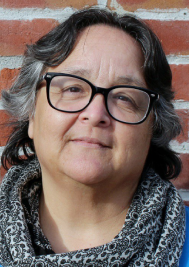We’ve all heard the stories of patients experiencing misdiagnosis of their diabetes. Generally, the story goes along one of these lines. I am overweight and have a family history of type 2 diabetes... Or, I’m African American or Hispanic or South Asian (i.e., a member of a group that is at greater risk of developing type 2 diabetes)... Or I was told I was too old to get type 1 diabetes…
So, the assumption and diagnosis ends up being that it is type 2 diabetes. Most often metformin is prescribed, as a first step, and the patient is sent on their way. Weeks or months later the patient finds themselves back in the examination room being criticized for their lack of “control.”
In these consultations, more often than not, no room is made for the patient to share their experiences and observations. Other possible explanations for why the prescribed medication isn’t working as expected are rarely seriously considered.
A correct diagnosis delayed for years
For Mila Clarke Buckley, diabetes advocate and author, this power imbalance in the exam room resulted in a four-and-a-half year wait before she was able to get the antibody test needed to correctly diagnose her diabetes.
“My doctors at the time looked at surface-level information,” Mila said. “They focused on weight and my family history of diabetes as typical answers to why I would be type 2, but ignored major flags like my diagnosis age, significant weight loss in a few weeks’ time, and some oral medications not lowering my blood sugar very much.”
Even though the antibody test only requires a simple blood draw Mila’s requests were brushed off. The medical professionals argued that her insurance might not pay for it. She was made to feel that she didn’t really understand what testing for antibodies meant. These experiences left Mila feeling like she didn’t have a say in her care. Soon she found herself hesitating to ask for the care she felt she needed.
Balance missing from the exam room
When we picture what goes on in the medical examination room, ideally we see people working in partnership to ensure the health of the patient. The patient and the practitioner come to the conversation with their own set of knowledge, experiences, and values. They come together as equals to forge a healthier path than either one of them could create individually on their own.
But real life often falls short of this ideal.
Too often in the exam room everyone is not treated as an equal. Medical professionals are treated as if they are superior. They drive the discussion and determine the best option for treatment. They just need to tell the patient what to do. And the patient should comply.
This hierarchy has its basis in history. Traditionally medical professionals have more comprehensive and specialized education than patients. In the past, ordinary people often had limited scientific or health knowledge and no direct access to medical publications. Also, our governments and regulatory systems give medical professionals special and exclusive rights when it comes to prescribing and administering drugs and treatments. Although it is right that they should be the only ones able to prescribe drugs, since they are trained to do so, it does impact the power balance.
These circumstances put medical professionals in the power position and makes the patient subject to their judgements. The result is a power imbalance that starts in the exam room and ultimately affects the patient’s health.
Lack of follow through delays diagnosis
“It’s typically standard to be tested for type 2 diabetes after childbirth when you’ve had gestational diabetes,” shared Sue Rericha, diabetes patient advocate and mother of five. “But I wasn’t tested until I asked my [family] doctor.”
During Sue’s first pregnancy she had an OB doctor who she describes as being “full of himself.” He told her that if she didn’t watch her blood sugar she would end up with a 10 pound baby with underdeveloped lungs. Despite having post-meal blood glucose levels in the mid 120s, he prescribed insulin and wouldn’t discuss any alternate approaches like adding post-meal exercise.
Thankfully Sue gave birth to a healthy baby. But she received no follow up on her gestational diabetes diagnosis after any of her pregnancies.
“I had gestational diabetes with all five of my children, plus I had a family history of diabetes,” Sue said. But it wouldn’t be until years later, after all five children were born, that Sue was screened for diabetes. Sue went to see her family doctor about pain in her knees and asked for an A1C check. Her family doctor ordered the blood draw and she was diagnosed with type 2 diabetes.
Patients’ ongoing health put at risk
You may ask, why be concerned about having medical professionals in the power position? Haven’t they gone through special training and proven that they have developed specialized knowledge and skills related to health and treating illness? After all, the patient can’t always just heal themselves. They need drugs or surgery or therapies. They need the expertise of a trained medical professional.
Yes, patients do benefit from the medical professional’s specialized knowledge and skills. But when the medical professional holds all the power patients are also subject to their assumptions and prejudices. As all humans do, medical professionals have blind spots that affect their understanding of the situation. Ultimately, these limitations can put the patient at risk of misdiagnosis or inadequate care. By truly working in a partnership between patients and medical professionals, it can mitigate these risks and make care more effective.
Both Mila and Sue encourage all patients to push to have their voices heard. As diabetes patient advocates they share their personal stories about the risks they faced when all the power in the exam room sat with the doctor and their concerns were dismissed.
Sue summed it up this way, “If you have a concern make sure you are heard. Ignorance is not always bliss.”



